Discover the 5 critical warning signs of Chronic Kidney Disease in Cats. Learn early symptoms, treatment options, and prevention tips to protect your feline companion’s health.
Table of Contents
When your beloved feline companion starts showing subtle changes in behavior or health, it’s natural to wonder if these are just signs of normal aging or something more serious. Chronic kidney disease in cats is one of the most common health conditions affecting our feline friends, particularly as they age, yet it often goes undetected until it has progressed significantly.
This silent condition affects an estimated 30-40% of cats over 10 years old and a staggering 81% of cats over 15 years, making it a leading cause of death in senior cats. The challenge lies in recognizing the early warning signs before irreversible damage occurs. Unlike acute kidney failure, chronic kidney disease develops gradually over months or years, often masquerading as normal aging changes until the kidneys have lost 75% of their function.
Understanding the critical warning signs of chronic kidney disease can be the difference between early intervention that extends your cat’s quality of life and missing the opportunity for effective treatment. In this comprehensive guide, we’ll explore the five most crucial warning signs every cat owner should recognize, along with expert insights on prevention, treatment, and management strategies.
Understanding Chronic Kidney Disease in Cats
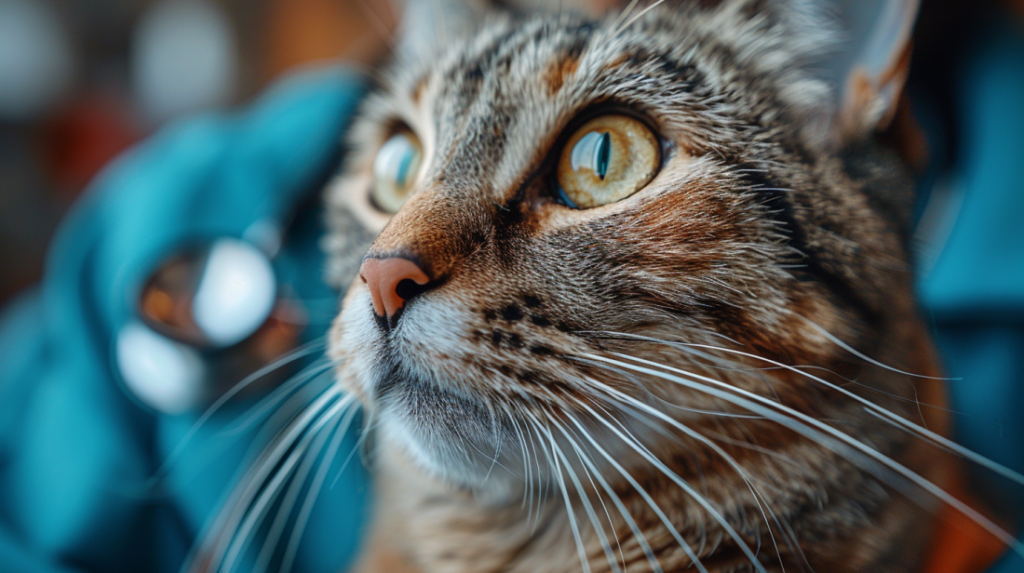
What Is Chronic Kidney Disease?
Chronic kidney disease (CKD) is a progressive condition where the kidneys gradually lose their ability to filter waste products and toxins from the blood. Unlike acute kidney failure, which develops suddenly, CKD develops slowly over time, making it particularly insidious.
The kidneys perform several vital functions:
- Filtering waste products from the blood
- Regulating blood pressure
- Producing red blood cells
- Maintaining electrolyte balance
- Concentrating urine to conserve water
When CKD in older cats develops, these functions become compromised, leading to a buildup of toxins in the bloodstream and various clinical symptoms.
🐾 Critical Warning Signs of Chronic Kidney Disease in Cats
| Warning Sign | Description | Severity | When to Act |
|---|---|---|---|
| Increased Thirst & Urination | Polydipsia and polyuria – your cat drinks more water than usual and urinates more frequently. This is often the first noticeable sign. | Critical | Contact vet within 24-48 hours if persistent |
| Unexplained Weight Loss | Gradual loss of body weight and muscle wasting despite normal or increased food intake. Often accompanied by visible muscle loss. | High | Schedule vet appointment within 1 week |
| Appetite Changes | Decreased interest in food, pickiness with meals, or complete loss of appetite. May show interest but eat very little. | High | Monitor for 2-3 days, then contact vet |
| Lethargy & Behavioral Changes | Reduced activity levels, less interaction with family, sleeping more than usual, or personality changes. | Medium | Note changes and discuss at next vet visit |
| Vomiting & GI Symptoms | Frequent vomiting, nausea, bad breath, mouth ulcers, or other gastrointestinal symptoms indicating toxin buildup. | Critical | Seek immediate veterinary attention |
Risk Factors and Prevalence
Research shows that chronic kidney disease prevalence varies significantly based on age:
- 1-3% in the general cat population
- 30-40% in cats over 10 years old
- Up to 81% in cats over 15 years old
Several factors increase the risk of developing CKD:
- Age: The most significant risk factor, with prevalence increasing dramatically after age 7
- Genetics: Certain breeds like Persian and Maine Coon cats may be predisposed
- Diet: High-phosphorus diets and exclusive dry food feeding may contribute
- Concurrent diseases: Diabetes, hypertension, and dental disease
- Environmental toxins: Exposure to certain medications or chemicals
By Stage 4, cats have less than 10% of their original kidney function remaining, emphasizing the critical importance of early detection.
The 5 Critical Warning Signs of Chronic Kidney Disease in Cats
1. Increased Thirst and Urination (Polydipsia and Polyuria)
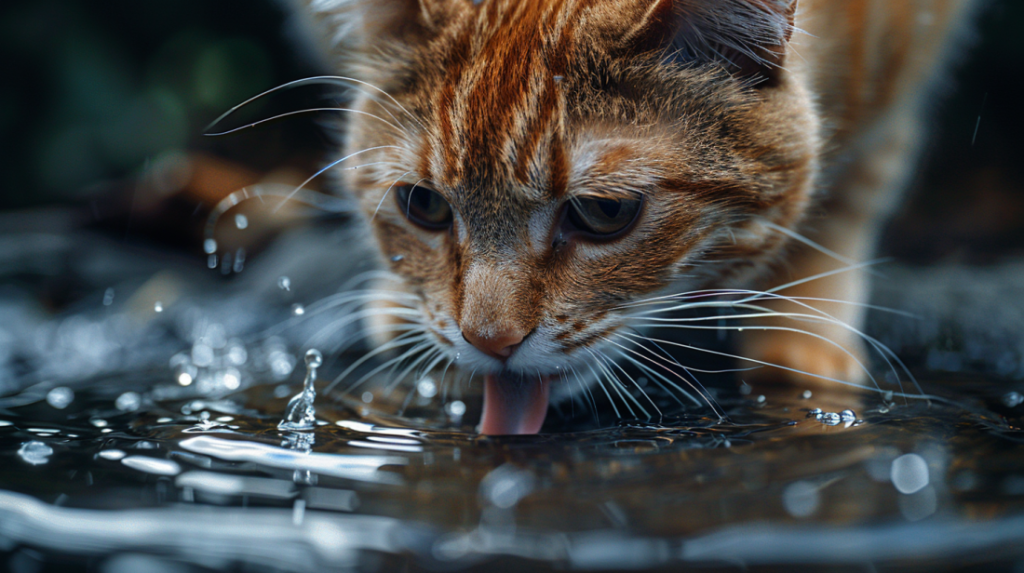
The most common and earliest sign of chronic kidney disease in cats is a noticeable increase in water consumption and urination frequency. This combination, known medically as polydipsia (excessive thirst) and polyuria (excessive urination), occurs because damaged kidneys lose their ability to concentrate urine effectively.
What to watch for:
- Your cat drinking from unusual sources (faucets, toilets, puddles)
- Larger or more frequent clumps in the litter box
- Accidents outside the litter box due to increased urgency
- Water bowl needs refilling more frequently than usual
Why this happens: Healthy kidneys concentrate urine to conserve water. When kidney function declines, cats produce large volumes of dilute urine, leading to dehydration and compensatory increased thirst.
Clinical insight: Dr. Sarah Vaden, a veterinary nephrologist, notes that cats with early CKD may drink 2-3 times their normal water intake. A normal cat typically drinks 2-4 ounces of water per 5 pounds of body weight daily.
2. Unexplained Weight Loss and Muscle Wasting
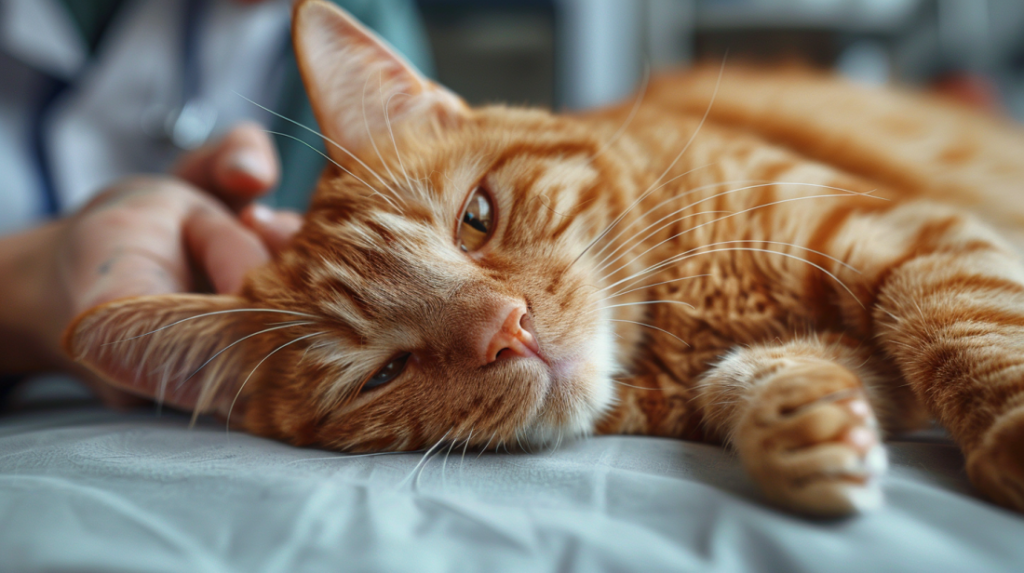
Progressive weight loss is often one of the first visible signs that alert owners to potential health problems. In cats with chronic kidney disease, weight loss occurs gradually and may be accompanied by muscle wasting, particularly along the spine and hindquarters.
What to watch for:
- Gradual loss of body weight over weeks or months
- Prominent spine or hip bones becoming more visible
- Loss of muscle mass, especially in the hindquarters
- Clothes or collars becoming looser
- Decreased interest in food or eating smaller portions
Why this happens: Several factors contribute to weight loss in CKD cats:
- Uremic toxins suppress appetite
- Metabolic acidosis increases protein breakdown
- Chronic inflammation alters metabolism
- Nausea and vomiting reduce food intake
Expert recommendation: Regular weight monitoring is crucial. A loss of more than 10% of body weight warrants immediate veterinary attention. Consider weekly weigh-ins for senior cats using a digital scale.
3. Changes in Appetite and Eating Habits
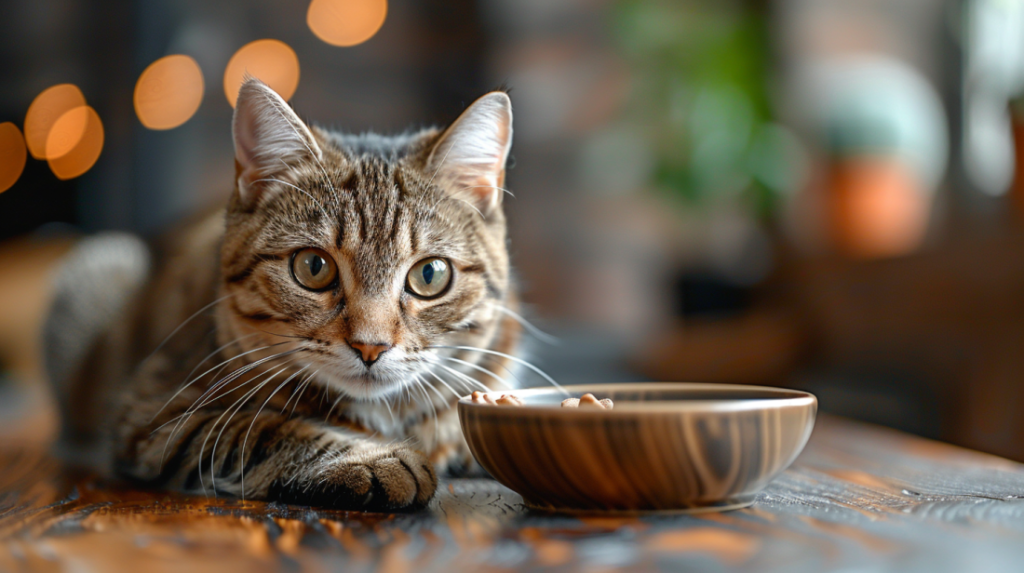
Appetite changes in cats with chronic kidney disease can range from subtle pickiness to complete food aversion. These changes often occur gradually, making them easy to dismiss as normal aging or finicky eating behavior.
What to watch for:
- Showing interest in food but walking away after a few bites
- Preferring treats over regular meals
- Eating only specific textures or flavors
- Complete loss of appetite for 24-48 hours
- Increased interest in unusual items (grass, non-food objects)
The uremic appetite cycle: Early stages may show increased appetite as the body tries to compensate for nutrient losses. As toxin levels rise, appetite typically decreases due to nausea and altered taste sensation.
Practical tip: Keep a food diary noting what your cat eats, when, and how much. This information is invaluable for your veterinarian in assessing disease progression.
4. Lethargy and Behavioral Changes
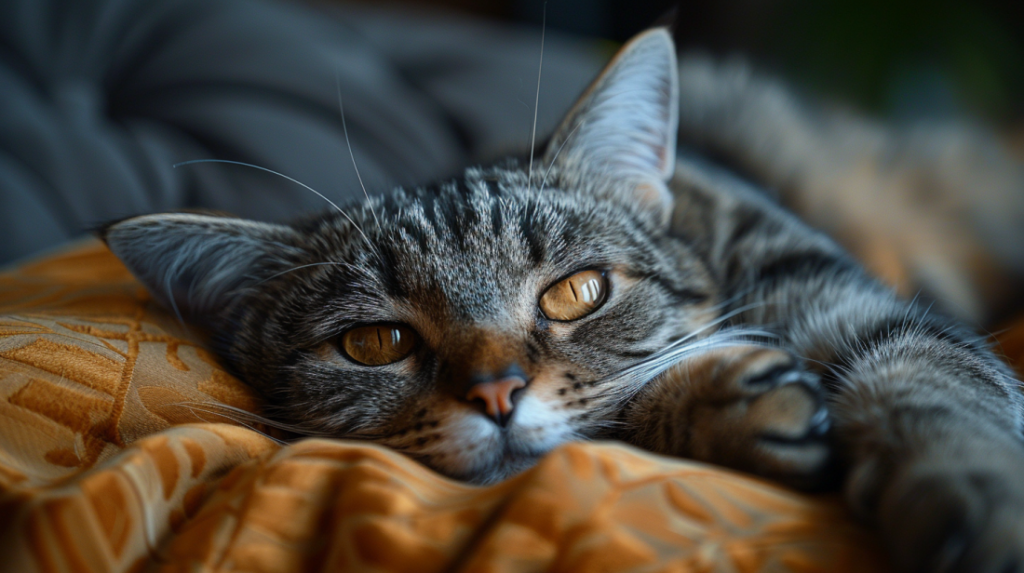
Decreased energy levels and behavioral changes are often subtle initially but become more pronounced as chronic kidney disease progresses. These changes reflect the body’s struggle to cope with increasing toxin levels and metabolic imbalances.
What to watch for:
- Sleeping more than usual or in different locations
- Reduced interest in play, toys, or interaction
- Hiding in unusual places or avoiding family activities
- Changes in grooming habits (over-grooming or neglecting grooming)
- Increased irritability or vocalization
- Reluctance to jump or climb
The energy-toxin connection: As kidney function declines, waste products accumulate in the bloodstream, causing uremia. This condition directly affects brain function, leading to lethargy, confusion, and behavioral changes.
Case study: A 12-year-old domestic shorthair named Whiskers was brought to the clinic when his owner noticed he had stopped greeting her at the door and was spending most of his time under the bed. Blood work revealed Stage 2 CKD. With proper treatment, Whiskers regained much of his previous energy and social behavior within six weeks.
5. Vomiting and Gastrointestinal Symptoms
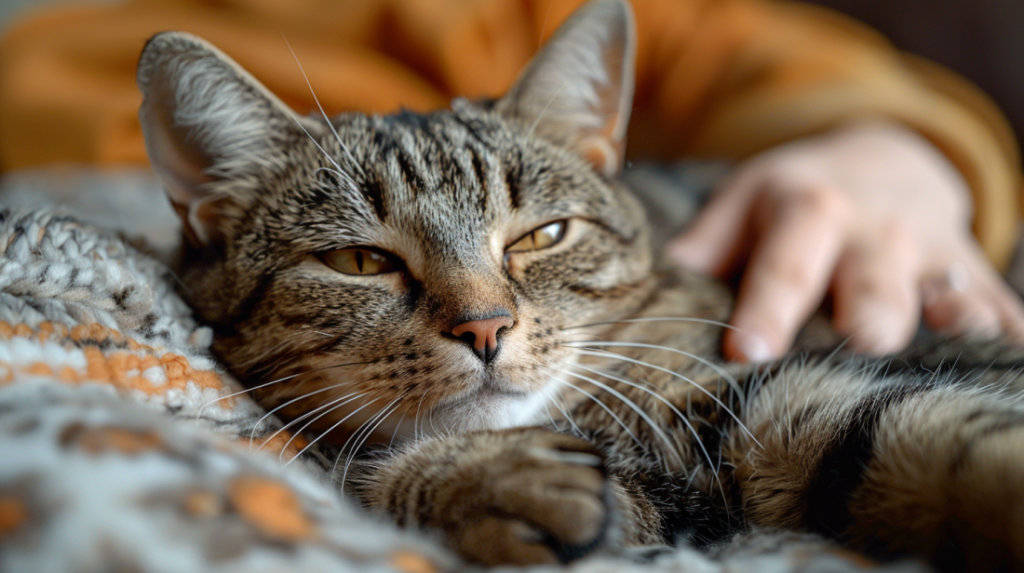
Gastrointestinal symptoms, particularly vomiting, are common in cats with chronic kidney disease and often serve as a red flag that prompts veterinary visits. These symptoms result from uremic toxins affecting the digestive system.
What to watch for:
- Occasional vomiting that becomes more frequent over time
- Vomiting clear liquid, bile, or undigested food
- Bad breath with an ammonia-like odor
- Dry, sticky gums or mouth ulcers
- Constipation or changes in stool consistency
- Drooling or pawing at the mouth
The uremic connection: High levels of urea and other waste products in the blood can cause:
- Gastric irritation leading to nausea and vomiting
- Oral ulceration from ammonia buildup
- Altered gut bacteria affecting digestion
Important distinction: While occasional hairballs are normal, frequent vomiting (more than once per week) in senior cats should always be investigated, especially when accompanied by other symptoms.
📊 CKD Stages and Treatment Options
| Stage | Kidney Function | Symptoms | Treatment Options | Prognosis |
|---|---|---|---|---|
| 1 | Normal or slightly decreased (Creatinine < 1.6 mg/dL) |
Often no visible symptoms May have subtle changes in thirst |
|
Excellent |
| 2 | Mild kidney damage (Creatinine 1.6-2.8 mg/dL) |
Increased thirst and urination Mild appetite changes |
|
Good |
| 3 | Moderate kidney damage (Creatinine 2.9-5.0 mg/dL) |
Noticeable weight loss Decreased appetite Lethargy |
|
Fair |
| 4 | Severe kidney damage (Creatinine > 5.0 mg/dL) |
Severe symptoms Vomiting Significant weight loss Poor quality of life |
|
Poor |
Additional Warning Signs to Monitor
Poor Coat Quality and Skin Changes
Cats with chronic kidney disease often develop a dull, unkempt coat due to decreased grooming behavior and nutritional deficiencies. The skin may become dry, flaky, or develop a greasy texture.
Dental Problems and Bad Breath
Kidney failure symptoms in cats frequently include dental issues and halitosis. The characteristic ammonia-like breath odor occurs when the kidneys cannot filter urea effectively, leading to its accumulation in saliva.
Blood Pressure Changes
Hypertension affects approximately 60% of cats with CKD and can cause:
- Sudden blindness or eye problems
- Increased vocalization
- Disorientation or stumbling
- Seizures in severe cases
Diagnostic Testing for Chronic Kidney Disease
Essential Blood Work
Comprehensive diagnosis requires several blood tests:
- Serum Creatinine: Primary marker for kidney function
- Blood Urea Nitrogen (BUN): Secondary indicator of kidney health
- SDMA (Symmetric Dimethylarginine): Earlier detector of kidney dysfunction
- Phosphorus levels: Often elevated in CKD
- Complete Blood Count (CBC): Checks for anemia
- Electrolyte panel: Monitors sodium, potassium, and chloride
Urinalysis and Urine Protein Testing
Urine testing provides crucial information about kidney function:
- Specific gravity: Measures urine concentration ability
- Protein levels: Elevated protein indicates kidney damage
- Microscopic examination: Identifies cells, crystals, or bacteria
Advanced Imaging
- Ultrasound: Evaluates kidney size, shape, and structure
- X-rays: Rules out kidney stones or other abnormalities
- Blood pressure measurement: Essential for complete assessment
Treatment Options for Chronic Kidney Disease in Cats
Dietary Management
Treatment for chronic kidney disease in cats primarily focuses on dietary modification, which has been proven to slow disease progression and improve quality of life.
Therapeutic diet principles:
- Reduced protein (but high-quality protein to prevent muscle wasting)
- Restricted phosphorus to prevent bone disease
- Controlled sodium to manage blood pressure
- Increased omega-3 fatty acids for anti-inflammatory effects
- Enhanced palatability to encourage eating
Popular prescription diets:
- Hill’s Prescription Diet k/d
- Royal Canin Renal Support
- Purina Pro Plan Veterinary Diets NF
Fluid Therapy and Hydration
Maintaining proper hydration is crucial for cats with CKD:
- Subcutaneous fluid administration at home
- Water fountains to encourage drinking
- Wet food diets to increase moisture intake
- Flavor enhancers like low-sodium broth
Medications and Supplements
Phosphorus binders: Aluminum hydroxide or calcium carbonate to reduce phosphorus absorption
ACE inhibitors: Enalapril or benazepril for blood pressure control and kidney protection
Anti-nausea medications: Maropitant (Cerenia) or ondansetron for vomiting control
Appetite stimulants: Mirtazapine or capromorelin to encourage eating
Supplements:
- Omega-3 fatty acids for kidney protection
- Potassium supplementation if levels are low
- B-vitamins to replace losses in urine
Management of Concurrent Conditions
Anemia treatment: Erythropoietin-stimulating agents or iron supplementation
Hypertension management: Amlodipine is the first-line antihypertensive
Dental care: Regular cleanings and home dental care to reduce bacterial load
🛡️ Prevention & Monitoring Guidelines for CKD
| Prevention Category | Recommended Actions | Frequency | Key Benefits |
|---|---|---|---|
| Regular Veterinary Care | Annual wellness exams with blood work for cats over 7 years Semi-annual visits for senior cats (10+ years) Complete urinalysis and chemistry panel |
Annual |
|
| Hydration Support | Fresh water available at all times Consider water fountains or multiple bowls Wet food diet to increase moisture intake Monitor water consumption |
Daily |
|
| Quality Nutrition | High-quality protein with appropriate levels Avoid excessive phosphorus Maintain healthy body weight Age-appropriate diet transitions |
Daily |
|
| Environmental Safety | Remove toxic plants (lilies, azaleas) Secure medications and chemicals Avoid nephrotoxic substances Safe, stress-free environment |
Weekly |
|
| Home Monitoring | Track water intake and urination habits Monitor appetite and weight Watch for behavioral changes Document any concerning symptoms |
Monthly |
|
Prevention Strategies for Kidney Disease
Regular Veterinary Care
Early detection is key to successful management:
- Annual wellness exams for cats under 7 years
- Biannual exams for senior cats (7+ years)
- Annual blood work starting at age 7
- Immediate attention for any concerning symptoms
Optimal Nutrition Throughout Life
Lifelong dietary considerations:
- High-quality protein sources
- Appropriate hydration through wet food
- Avoiding excessive phosphorus in treats
- Maintaining ideal body weight
Environmental and Lifestyle Factors
Stress reduction: Chronic stress can impact immune function and overall health
Toxin avoidance: Keep cats away from antifreeze, lilies, and certain medications
Fresh water access: Multiple water sources throughout the home
Regular exercise: Maintains muscle mass and overall health
Living with a CKD Cat: Quality of Life Considerations
Home Care Management
Daily monitoring checklist:
- Appetite and water consumption
- Litter box usage and urine volume
- Energy levels and social interaction
- Weight (weekly weigh-ins)
- Medication compliance
Creating a Comfortable Environment
Environmental modifications:
- Easy access to water and food
- Comfortable, quiet resting areas
- Non-slip surfaces for mobility
- Readily accessible litter boxes
When to Consider Quality of Life Assessment
Warning signs that may indicate declining quality of life:
- Persistent nausea despite treatment
- Complete loss of appetite for more than 2-3 days
- Inability to maintain basic functions
- Obvious pain or distress
- Social withdrawal and hiding
Working with your veterinarian: Regular quality of life assessments help determine when treatments are beneficial versus when comfort care might be more appropriate.
❓ Frequently Asked Questions About CKD in Cats
The earliest signs of kidney disease in cats are typically increased thirst and urination, followed by gradual weight loss and decreased appetite. These early signs of kidney disease in cats often develop slowly over weeks to months, making them easy to miss initially. Cat owners should also watch for subtle changes in energy levels and coat quality.
The lifespan of cats with chronic kidney disease varies significantly depending on the stage at diagnosis and response to treatment. Cats diagnosed in early stages (Stage 1-2) can often live for several years with proper management, while those in advanced stages may have a prognosis of months. Early detection and aggressive treatment are key factors in extending both lifespan and quality of life.
While not all cases of chronic kidney disease in cats can be prevented, several strategies can reduce risk. These include maintaining regular veterinary care with annual blood work for senior cats, providing a high-quality diet with appropriate protein levels, ensuring adequate hydration, and avoiding exposure to kidney-toxic substances like certain medications and plants.
Cats with kidney disease should avoid foods high in phosphorus, including fish, organ meats, and dairy products. Additionally, avoid high-sodium treats and foods, as well as any foods containing artificial preservatives that might stress the kidneys. Always consult with your veterinarian about appropriate dietary choices for your cat’s specific stage of kidney disease.
Chronic kidney disease itself typically isn’t painful in the early stages, but cats may experience discomfort from related symptoms like nausea, mouth ulcers, or high blood pressure. Advanced kidney disease can cause more significant discomfort due to toxin buildup. Pain management is an important part of treatment for chronic kidney disease in cats when necessary.
Most cats with kidney disease can safely drink tap water, provided it meets municipal safety standards. However, some veterinarians recommend filtered water to reduce potential contaminants. The most important factor is encouraging adequate water intake, so if your cat prefers a particular water source, that’s generally the best choice. Discuss water quality concerns with your veterinarian for personalized advice.
The Emotional Journey: Supporting Pet Owners
Coping with the Diagnosis
Receiving a CKD diagnosis can be overwhelming for pet owners. It’s important to understand that:
- Early-stage CKD is manageable with proper care
- Many cats live comfortable lives for months to years with treatment
- You are not alone – CKD is extremely common in senior cats
Building Your Support Team
Your veterinary team: Regular communication is essential for optimal care
Online communities: Connect with other CKD cat owners for support and advice
Pet insurance: Understanding coverage for chronic conditions
For more expert pet care tips and product recommendations, visit BlithePet.com — your trusted source for pet wellness.
Conclusion
Recognizing the critical warning signs of chronic kidney disease in cats can make the difference between early intervention and missed opportunities for effective treatment. The five key signs – increased thirst and urination, unexplained weight loss, appetite changes, lethargy, and gastrointestinal symptoms – often develop gradually but should never be dismissed as normal aging changes.
Remember that CKD in older cats is incredibly common, affecting up to 81% of cats over 15 years old. However, with early detection, appropriate treatment, and dedicated care, many cats can maintain a good quality of life for months or even years after diagnosis. Regular veterinary care, including annual blood work for senior cats, remains the best strategy for catching kidney disease in its early, more manageable stages.
The journey of caring for a cat with chronic kidney disease can be challenging, but it’s also filled with opportunities to strengthen the bond with your feline companion. By staying vigilant for early signs of kidney disease in cats, working closely with your veterinary team, and providing consistent, loving care, you can help ensure your cat enjoys the best possible quality of life.
Have a similar experience with your pet? Share it in the comments below!

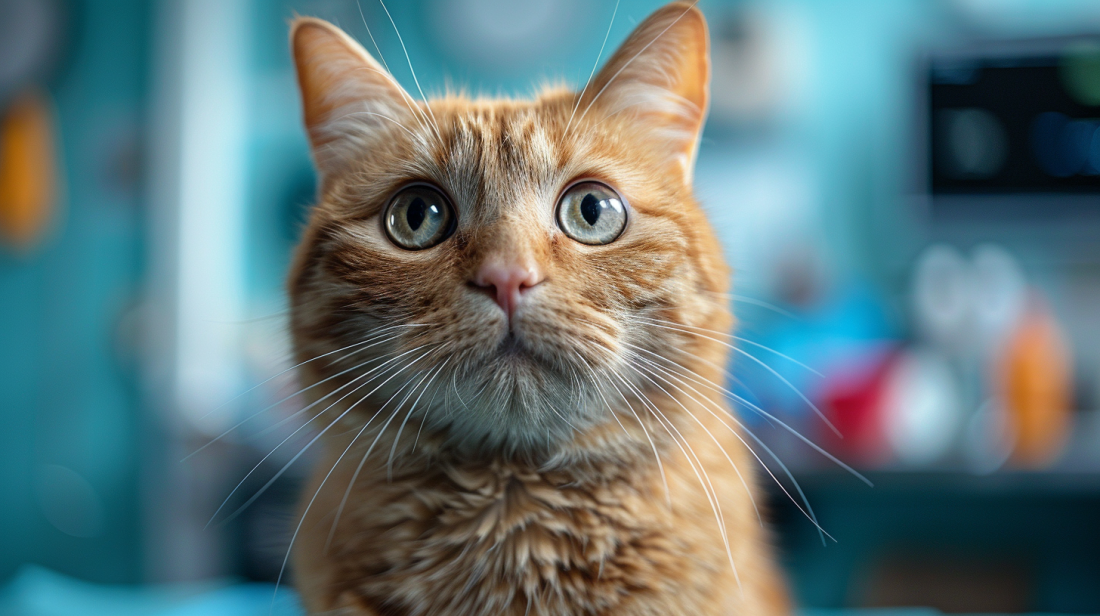
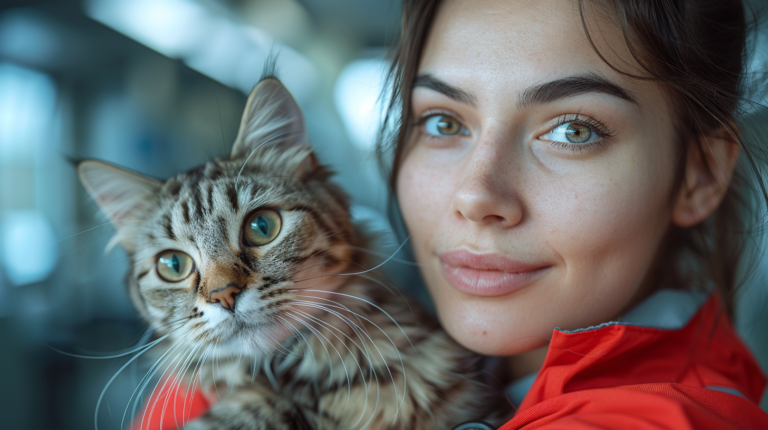
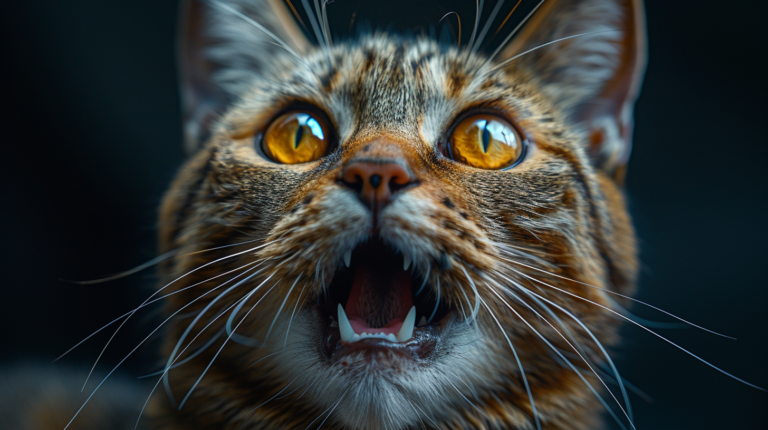
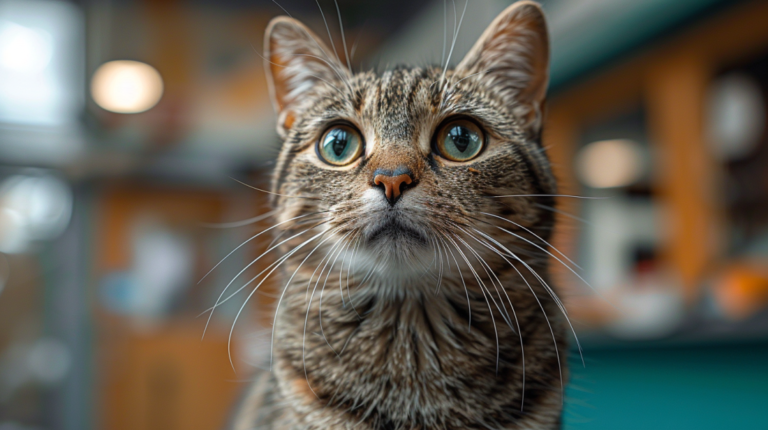
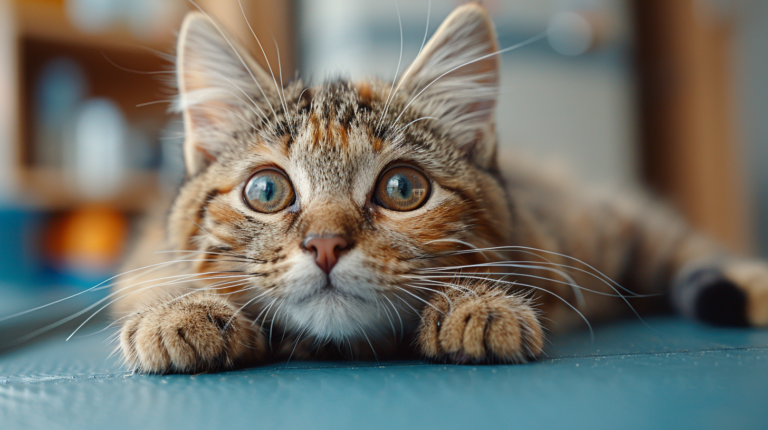
Leave a Reply